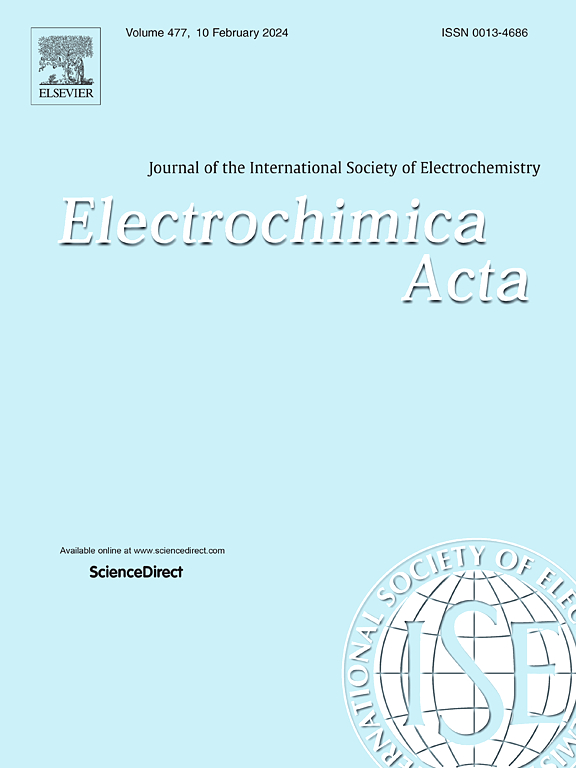磷化物如何催化CO2还原反应?
IF 5.6
3区 材料科学
Q1 ELECTROCHEMISTRY
引用次数: 0
摘要
将二氧化碳转化为有价值产品的电化学方法是对抗工业和交通部门大量排放二氧化碳的有前途的新方法之一。在这项研究中,我们通过密度泛函理论计算来研究过渡金属磷化物(TMP)催化剂将CO2转化为甲酸、甲烷二醇和甲醇的活性和选择性。我们研究了29个TMPs,只有6个被发现有希望用于CO2RR应用。绘制了自由能图,以获得在不同催化剂表面生成产物所需的起始势。HER和CO2RR的比较表明,OCHO中间体的形成更占优势,适合进一步质子化,直到产物形成。我们的研究表明,CrP和VP是水溶液中仅产生甲酸的极好候选者,其起始电位值分别为-0.25 V和-0.20 V vs RHE。此外,TiP是生成甲酸、甲二醇和甲醇的有效材料,其起始电位分别为-0.43 V、-0.62 V和-0.62 V。这项研究为二氧化碳转化为有用的绿色能源燃料提供了基础帮助。本文章由计算机程序翻译,如有差异,请以英文原文为准。


How can phosphides catalyze CO2 reduction reaction?
The electrochemical method for converting CO2 into valuable products is one of the promising and novel methods to fight against the massive emission of CO2 from industries and transportation sectors. In this study, we performed density functional theory calculations to investigate the activity and selectivity of transition metal phosphide (TMP) catalysts for the conversion of CO2 into formic acid, methanediol, and methanol. We studied 29 TMPs and only 6 were found promising for the CO2RR application. Free energy diagrams were drawn to obtain onset potentials required for product formation on different catalyst surfaces. The comparison of HER and CO2RR indicated that the formation of the OCHO intermediate was more dominant and suitable for further protonation until the product was formed. Our studies revealed CrP and VP as excellent candidates to produce only formic acid in aqueous form with the onset potential values of -0.25 V and -0.20 V vs RHE, respectively. In addition, TiP was found to be an effective material for forming formic acid, methanediol, and methanol with the onset potential values of -0.43 V, -0.62 V, and -0.62 V, respectively. This study provides fundamental aids for the conversion of CO2 into useful green energy fuels.
求助全文
通过发布文献求助,成功后即可免费获取论文全文。
去求助
来源期刊

Electrochimica Acta
工程技术-电化学
CiteScore
11.30
自引率
6.10%
发文量
1634
审稿时长
41 days
期刊介绍:
Electrochimica Acta is an international journal. It is intended for the publication of both original work and reviews in the field of electrochemistry. Electrochemistry should be interpreted to mean any of the research fields covered by the Divisions of the International Society of Electrochemistry listed below, as well as emerging scientific domains covered by ISE New Topics Committee.
 求助内容:
求助内容: 应助结果提醒方式:
应助结果提醒方式:


